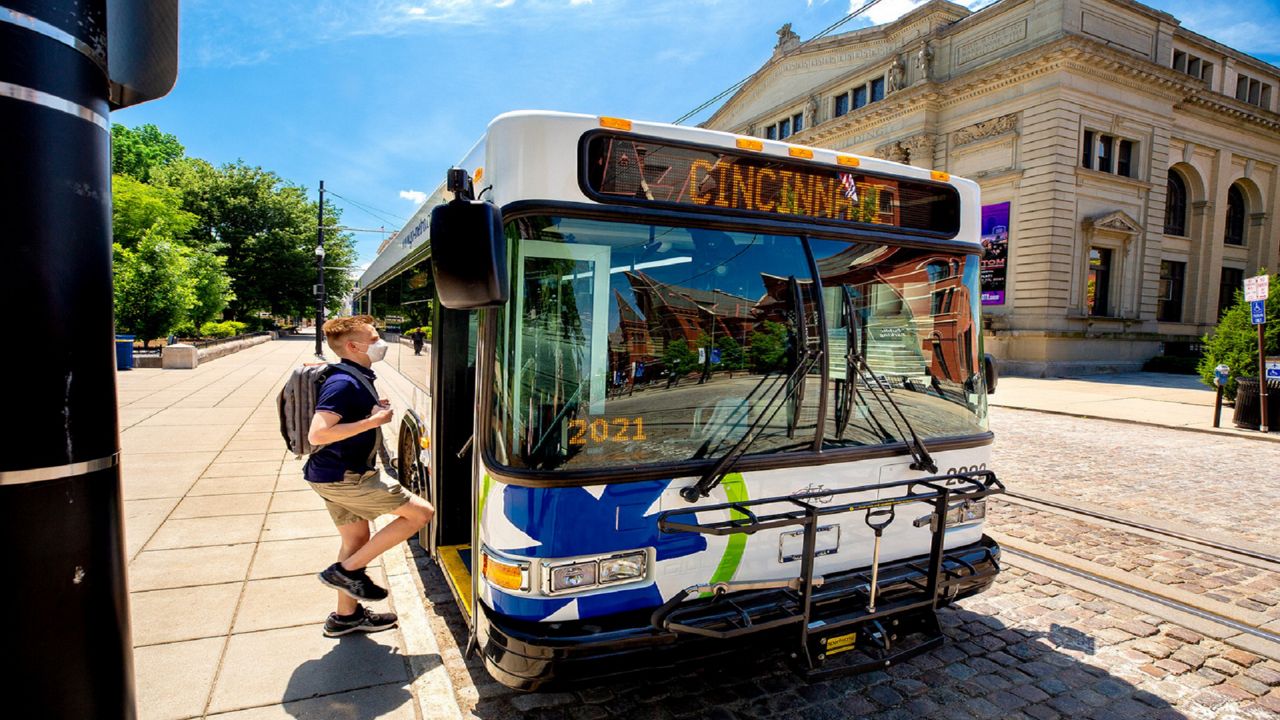CINCINNATI – Metro and other greater Cincinnati transit agencies will no longer require customers to wear facial coverings following the Transportation Security Administration's decision to stop enforcing the federal mask mandate.
What You Need To Know
- Metro, other transit agencies will no longer enforce a CDC mandate requiring masks on public transportation
- The decision follows a TSA announcement Monday that it would no longer enforce the rule
- A federal judge ruled the CDC overstepped with the mandate, which had been in place since February 2021
- The ruling left the decision to require masks optional for each agency
The TSA’s decision resulted from a federal court ruling in Florida.
In her ruling, U.S. District Judge Kathryn Kimball Mizelle in Tampa found the Centers for Disease Control and Prevention (CDC) had overstepped its authority when it issued a mask mandate for buses, planes and other forms of public transportation. She said the CDC “failed to justify its decision” and did not follow proper rule-making procedures that “left it fatally flawed,” according to the Associated Press.
The ruling left it up to individual airlines and local transit agencies to decide what to do. Airlines, bus systems and railways quickly moved to make masks optional.
The CDC's mask mandate had been in effect nationwide since Feb. 2, 2021.
Effective immediately, masks are recommended but not required onboard all of Metro's fixed-routes and its Access paratransit vehicles. Masks are no longer required at its transit centers either. The move affects both passengers and bus operators.
Troy Miller is president and business agent for Amalgamated Transit Union (ATU) Local 627, the labor union representing the Metro drivers. He said employees found out about the policy change early this morning by way of an electronic message from Metro.
ATU, an international labor union, Miller said some of its members support the decision to make masks optional, but not all of them. He feels the decision on whether or not passengers should need to wear a mask should be left up to the discretion of the individual operator.
Miller admitted doing so may create some confusion among passengers, but to him that’s a small price to pay for driver safety. 220 ATU members around the globe have died from COVID-19, he said.
He went on to quote famed labor organizer Mary "Mother" Jones: "Mourn the dead, and fight like hell for the living.”
"A firefighter wears protective equipment when they’re on the job, a police officer wears a bulletproof vest,” Miller said. “The mask is a piece of protective equipment designed to keep drivers safe on the job."
Brandy Jones, a spokesperson for Metro, said the agency plans to keep in place most of its pandemic-related safety protocols, including regular sanitizing of vehicles, plexiglass barriers at the operator station while boarding, and encouraging the use of Transit app for contactless fare payment.
Metro buses had free disposal masks for customers to use "during the height of the pandemic" along with hand sanitizer, Jones said. But they "no longer felt the need" to offer them as customers became accustomed to bringing and wearing their own masks.
Metro is not alone in their decision. Other regional transit agencies also suspended their mask requirements Tuesday, including Dayton International Airport and Cincinnati/Northern Kentucky International Airport. Those changes affect the space inside the respective airports only. Decisions about in-flight requirements will come from the individual airlines.
"CVG is no longer requiring masks to be worn, but rather they are now optional in alignment with the following, TSA and airlines," a spokesperson for the airport said.
The Cincinnati Bell Connector will follow the TSA guidance as well.
"Passengers are still welcome to continue to wear masks while riding, and our team will continue to provide hand sanitizer on board," according to a tweet posted by streetcar, which is run by the City of Cincinnati.
The CDC had recently extended the mandate, which would have expired Monday, until May 3, to allow more time to study the BA.2 omicron subvariant of COVID-19. BA.2 is now responsible for more than 85% of U.S. cases in the United States, per the CDC.
The goal of the planned 15-day extension was to provide more time to assess the potential impact of the recent rise in cases on things such as deaths and hospital capacity, per the TSA.
White House press secretary Jen Psaki told reporters the court decision was “disappointing.”
The Justice Department declined to comment when asked if it would seek an emergency stay to block the judge’s order, per the AP report.
The CDC also declined to comment. However, the health agency continues to recommend the use of facial coverings on public transportation and for those waiting at transit centers and airports.



